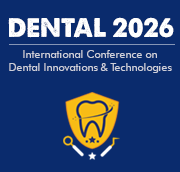Title : Comparison of maxillary expansion outcomes using clear aligners versus rapid palatal expanders in mixed dentition patients
Abstract:
Maxillary transverse deficiency (MTD) is one of the most widespread skeletal problems in orthodontics, affecting about 21% of patients in the mixed dentition stage (Bruni et al., 2024; Lu et al., 2023). Usually, two different appliances - rapid maxillary expander (RME) or slow maxillary expander (SME) - have been used for treating MTD (Bruni et al., 2024; Lu et al., 2023; Lombardo et al., 2023; Torbaty et al., 2024). The Invisalign First System (IFS) is a newly introduced treatment option, specifically designed for patients in mixed dentition phase (Bruni et al., 2024; Lu et al., 2023; Torbaty et al., 2024). Therefore, there is limited research evaluating the efficacy of clear aligners compared to RME in mixed dentition. The aim of this study was to compare maxillary dimensional changes in mixed dentition patients treated with clear aligners to those treated with rapid palatal expanders.
The systematic review was carried out following the PRISMA guidelines. The PICO question was: do rapid palatal expanders expand the maxilla better than clear aligners in mixed dentition patients? The electronic search with keywords “clear aligner” AND “rapid palatal expander” AND “mixed dentition” was performed by two authors on September 9th, 2024, using 6 databases and registers: PubMed, Google Scholar, ScienceDirect, Web of Science, Cochrane Library and ClinicalTrials.gov. Inclusion criteria: full-text research articles published less than five years ago, written only in English, randomized controlled trials, and retrospective and prospective cohort studies that evaluated maxillary expansion using clear aligners vs. rapid palatal expanders in mixed dentition patients.
The search resulted in a total of 992 research articles. After applying selection criteria, 8 full-text articles were found, 4 were included in this review for final analysis. A total of 242 patients participated in the conducted studies. Intraoral scans were taken before appliance placement and at the end of treatment, when the appliances were removed. Digital dental casts were then collected and analyzed. The results of Bruni et al. showed that expansion was greater in the RME group; however, only the intermolar width at the gingival level was statistically significant (1.58±1.53 mm vs. 3.87±1.67 mm; p<0.001) (Bruni et al., 2024). Lombardo et al. found that greater maxillary expansion was achieved with clear aligners in the intercanine width, both at the cusp and gingival levels (p<0.001) (Lombardo et al., 2023). The study by Lu et al. observed statistically significant differences in the intercanine (1.89±1.56 mm vs. 4.18±2.01 mm), intermolar (2.43±1.42 mm vs. 5.32±1.13 mm), and second interdeciduous molar (1.93±1.75 mm vs. 5.52±1.31 mm) widths (p<0.05), with more efficient expansion in the RME group (Lu et al., 2023). The findings of Torbaty et al. also showed superior results in the RME group (Torbaty et al., 2024).
Rapid palatal expansion is the preferred method for achieving maxillary dental arch expansion in mixed dentition patients, whereas clear aligners may be more suitable for targeted expansion of the anterior maxillary arch.



